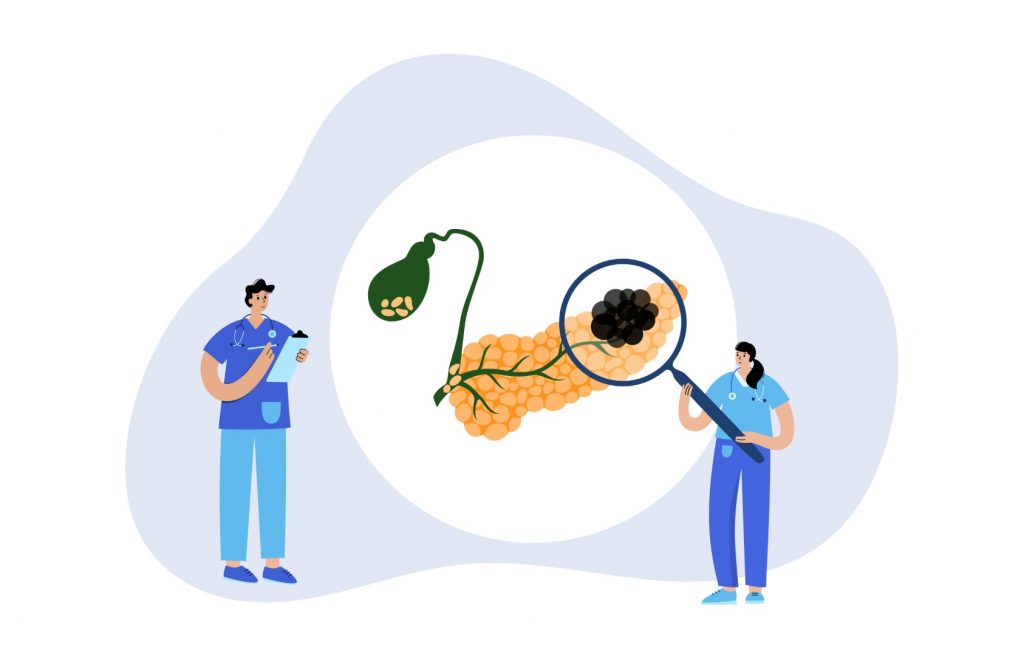
Bile duct cancer- causes, symptoms and treatment
What is bile duct cancer?
Cholangiocarcinoma or Bile duct cancer as it is commonly called is a cancer which is located in the bile ducts. The bile ducts are small tubes that connect the liver to the gall bladder and the small intestines and are an essential part of the digestive system. The severity of the condition is determined by one’s general health, the location of the cancer, its size and how far it has progressed. It generally occurs in people who are in their fifties.
Symptoms of Bile Duct Cancer
The symptoms which may be evident are:
- Yellowing of skin and the whites of the eye
- Itchy skin
- Darker urine
- Paler stools
- Loss of appetite
- Loss of weight
- Fatigue
- A general feeling of being unwell
- A high temperature
- Abdominal pain
These symptoms may not necessarily indicate cancer but it is better to get the investigation done as early as possible. A timely diagnosis makes Liver cancer treatment possible.
Diagnosis of the condition
The doctor may advice you to take a few or all of the following tests to diagnose the condition
- Specific blood tests
- Ultrasound scans, CT scans or MRI scans
- Biopsy is a procedure where a sample of cells from the bile ducts are examined for cancer.
- ERCP test
- PTC X – Ray
Causes of Bile Duct Cancer
There is a link between cancer and what irritates the bile ducts. These irritants could be duct stones or infestation with a parasite. Exact cause of bile duct cancer has not been found but researchers and scientists have found risk factors which can make you develop the condition.
Inflammation leads to changes in DNA cells. This causes the cells to grow out of control and cause cancers. Cancer is usually caused by DNA changes .Changes in genes usually develop cancerous cells.
Developing DNA mutations from parents greatly increase the risk of developing cancer. Gene mutations do not cause cancer. If a gene mutation does cause bile cancer, it is usually acquired through life and not inherited. Gene changes that lead to cancer is caused by inflammation. Gene changes happen without any reason and the changes could happen because of a random event that happens inside the cell.
Treatment for bile duct cancer
Though bile duct cancer is treatable, it is a difficult condition to treat.
The treatment option depends on your health, where the cancer has spread, and the kind of cancer you have and where the cancer is present.
Treatment includes chemotherapy, radio therapy and surgery.
– A surgery will be done to remove all or some parts of bile duct. Surgeries also remove parts of other organs and their lymph nodes. Doctors also perform surgery to help control the symptoms of the cancer. The aim of the surgery is to live better with the condition and it is not a cure.
– Chemotherapy is done to kill cancerous cells using medicines. This is also done to reduce size of the cancerous cells.
– Radiotherapy is done by using high energy rays that kills cancer cells. This is usually done to prevent the cancer from coming back and it is not done to treat the cancer. It is also done to control and improve the symptoms of the cancer.
Facts about bile duct cancer
- This is a rare condition. Only 8000 people in the United States are diagnosed each year.
- An accurate diagnosis is also difficult for this condition because real reason for this condition has not been found.
- Bile duct cancer is more common in south East Asia compared to other countries.
- The survival of a sufferer is related to the location of the cancer.
Who is at risk?
You are at risk of getting this type of cancer if you have:
- Non-alcoholic fatty disease
- Liver Cirrhosis
- IBD
- Hepatitis-B or Hepatitis-C
- Ulcerative Colitis
- Bile Duct Stones
If you smoke or drink or obese, the risk factor increases
Contact Us:
Reach out to the Chennai Liver Foundation if you know anyone suffering from Bile duct cancer . We can provide details about liver cancer treatment and prevention.
For liver disease assessment, visit Chennai liver foundation, our well known liver cancer treatment in Chennai.
